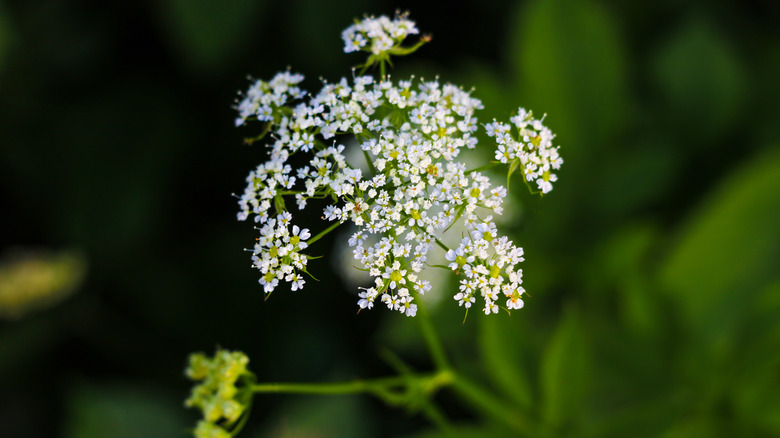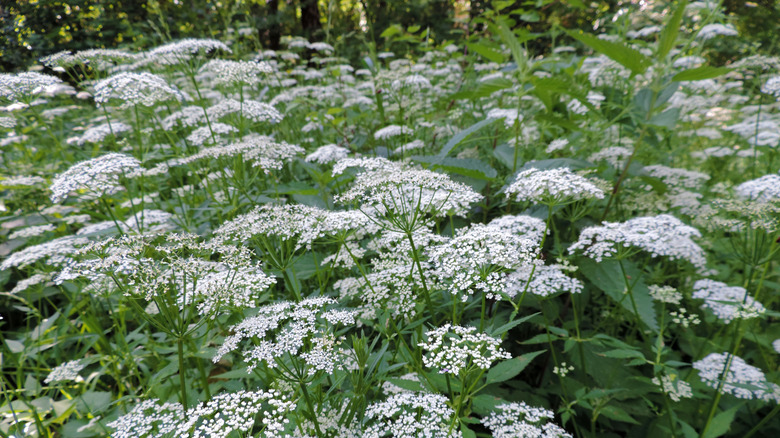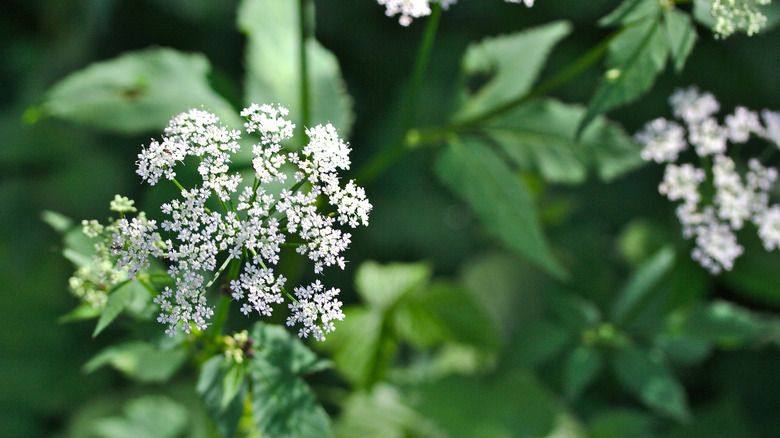Why You Don't Want To Grow Snow-On-The-Mountain In Your Garden
Snow-on-the-mountain, also known as Bishop's Weed, has a deceivingly beautiful appearance, but it is a sprawling, invasive species that grows quickly and thrives in less-than-ideal conditions. It's not just a nuisance but a serious problem for your plants. Although it does provide ground cover and has been used as a cover crop, you don't want to grow snow-on-the-mountain in your garden. It's an overly competitive weed that will cover everything in its path and rob nutrients from other plants.
Besides being overly competitive, snow-on-the-mountain is known to cause skin irritation when touched. If you have children who enjoy playing in the yard, growing this weed will likely lead to a pharmacy trip. So, it's best to eliminate it before it has time to overtake your garden and entice any young nature enthusiasts. Similarly to most garden weeds, it can be pulled by hand, but more intense measures may be needed if infestation has begun. Once it's been successfully removed, gardeners must remain vigilant as its sprouts may appear up to three years after weed removal. Snow-on-the-mountain is a weed with staying power; shorten the stay by eliminating it on sight.
Snow-on-the-mountain will blanket your garden
Much like kudzu, snow-on-the-mountain doesn't just grow — it creeps. It spreads over everything, including plants and garden decor. Sweet and small as it may first appear, the weed can quickly become a sprawling blanket covering large parts of your lawn. It doesn't matter how much time you took to plant those beautiful flowers — clusters of snow-on-the-mountain will take over if you let it.
The fast-growing weed can be seen traveling up trellises, covering outdoor decor and fixtures and smothering garden flowers. Though the weed's flowers are delicate, white, and objectively attractive, the rest of the plant is like any other standard weed. Curating an aesthetically pleasing garden is why many people choose the hobby, but snow-on-the-mountain can cover up hard work and beautiful flowers. For gardeners who like the overgrown, reclaimed-by-the-land look, the growth rate of this weed is great. For everyone else, it's a reason to act as quickly as possible to halt its spread.
It competes with neighboring plants for vital nutrients
Though it has a delicate appearance, snow-on-the-mountain is an invasive species that spreads rapidly. It is a creeping weed that competes with neighboring plants for nutrients and sunlight. Heavy competition results in poor plant performance and, ultimately, death. Because it spreads so quickly, snow-on-the-mountain is tough competition. Plants in its path will be covered and left in the dark if the weed thrives. Eliminating it before it spreads is essential to preserving the health of your plants.
If left alone, snow-on-the-mountain will be difficult and time-consuming to remove as it's very resilient. It tolerates long periods of drought and poor soil conditions. Because it needs so little to flourish, it will remain and reseed unless the entire plant is removed. Hand pulling may be a good way to ensure you remove the roots, but when there's a wide-scale infestation, that can be arduous. Chemical weed killer is a less time-consuming option but has its downsides, like skin and lung irritation. The best way to save yourself hours of time and money is to act fast at the first sight of snow-on-the-mountain.


